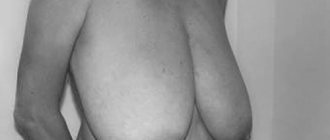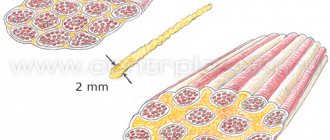Breast reduction, or reduction mammoplasty, is a very common aesthetic procedure. According to the most rough estimates, the share of such operations in the world is 7-10% of all plastic interventions.
It is known that the famous tennis player Simona Halep, Hollywood stars Christina Ricci, Drew Barrymore, Queen Latifah and many other celebrities resorted to breast reduction.
Why do women take such a step? Everything is very simple: a massive bust can be a source of psychological problems for its owner and the cause of the development of a whole bunch of diseases.
Normally, one mammary gland weighs from 300 to 500 grams, while with abnormal development, each breast can weigh several kilograms. It is not surprising that women dream of reducing such breasts.
Gravitational ptosis (breast drooping under the force of gravity), painful diaper rash and abrasions of the skin in the area of the inframammary fold, poor posture and joint diseases, problems with breathing and sleep - this is not a complete list of problems faced by the owner of overly curvy figures.
1
Consultation with a plastic surgeon
2 Mammography
3 Ultrasound of the mammary glands
Indications for reduction mammoplasty
There are many reasons that encourage patients to have their breasts reduced. Among them:
- gigantomastia, breast hypertrophy;
- pain and discomfort, curvature of the spine caused by large breast mass;
- pronounced discrepancy between the size of the left and right breasts;
- gravitational ptosis of the mammary glands;
- increased sensitivity and swelling of the breast due to its massiveness;
- diaper rash and inflammatory changes in the skin in the submammary fold;
- psychological discomfort of the patient.
Like any surgical intervention, reduction mammoplasty has medical contraindications.
The operation is not performed for the following diseases and conditions:
- oncopathology;
- heart and vascular diseases;
- diabetes;
- blood diseases;
- skin diseases;
- infections;
- pregnancy, lactation;
- age up to 18 years, etc.
Which bust is considered large?
Today there is no accurate diagnosis of normal bust size, because in many cases its volume and size depend on the individual characteristics and age of the woman. But there is a classification of mammary gland parameters to identify hypertrophy:
- Normal breast volume is up to 300 cubic centimeters.
- Slight hypertrophy ranges from 400 to 600 cubic centimeters.
- Greater hypertrophy is expressed by values from 600 to 800.
- High degree hypertrophy is indicated by numbers from 800 to 1000.
- Gigantomastia from 1000 to 1500 cubic centimeters.
The essence of reduction mammoplasty
Surgery for breast reduction involves removing excess glandular breast tissue and subcutaneous fat. The nipple-areola complex is moved to a higher position.
Prices
| Professor I.V. Sergeev | Plastic surgeons | |
| Areola correction | 162 000 | |
| Breast reduction with vertical scar | 350 000 | 150 000 |
| Breast reduction with T-scar | ||
| 1 category | 445 000 | 300 000 |
| 2 categories | 499 000 | 350 000 |
| 3 categories | 554 000 |
Large bust and health risks
Perhaps a large bust visually seems sexy and beautiful, but its owners are unlikely to agree with this. Breast hypertrophy leads to the development of many health problems.
The most obvious consequences:
- pain in the spine;
- osteochondrosis and poor posture;
- stoop and curvature of the cervical vertebrae;
- headache due to cerebrovascular accident;
- cardiovascular problems;
- skin inflammation and ulcers;
- risk of breast cancer.
In addition, the inability to choose beautiful underwear brings special discomfort to a woman with large breasts. Even the very fact of wearing it can cause serious pain due to hypertrophy of the mammary glands.
Exclusive methods of reduction mammoplasty: SPAIR and Graf
Plastic surgeons at our medical center use relatively new and well-proven foreign breast reduction techniques.
The purpose of the techniques is to avoid extensive anchor access (horizontal incision in the inframammary fold). After the operation, a scar remains either around the areola, a comma-shaped mark down and to the side, or up to the submammary fold (depending on the indications and the technique used). During the rehabilitation period, puffiness around the areola is possible, which goes away at the end of rehabilitation. The authors of the SPAIR and Graf methods are American surgeon Dr. Dennis Hammond and Brazilian surgeon Dr. Ruth Graf. A distinctive feature of the methods is the preservation of functionality, sensitivity of the gland and giving the breast a beautiful shape, and the absence of a horizontal incision under the breast significantly facilitates the psychological state of the patient.
What you need to know about breast reduction?
- After breast reduction surgery, scars remain that will be noticeable for a year and a half, then they will turn white and become almost invisible. When using the SPAIR technique, scars are minimized;
- The surgeon strives to ensure that the mammary glands are as symmetrical as possible after surgery, however, absolute symmetry is difficult to guarantee in this case;
- The patient should be prepared for the fact that in a few years (1-2 years) a slight prolapse of the mammary glands will occur. This is an inevitable process, however, the nipple-areolar complex will remain in place and the breast will not lose its good aesthetic appearance;
- Breast reduction after pregnancy preserves lactation. Reducing the gland by even 2 times its volume allows its main function to be preserved;
- Reduction breast surgery does not in any way affect the likelihood of benign and malignant neoplasms and other diseases of the mammary glands. Moreover, mastopathy and many other diseases that accompany mammary hypertrophy disappear after reduction plastic surgery.
Before breast reduction in our clinic in Moscow, it is necessary to undergo general tests for surgical intervention, as well as additionally undergo an examination by a mammologist, undergo an ultrasound and x-ray. Depending on your health condition, the surgeon may prescribe additional tests and examinations from the necessary doctors.
Breast reduction in teenagers
It is not advisable to carry out any operations on the breast during adolescence, since both the breast and the entire body are in the growth stage. It's better to wait until growth stops, which usually happens by age 22. The reason for this is not that health is harmed. Plastic surgery is as safe as possible. The reason is that it is impossible to build perspectives, since changes in the body affect the result of the operation.
But in the case of breast reduction surgery, things are a little different. If a teenager has a hypertrophied bust, which does not cause serious problems, then it is advisable to wait a while. And if such a bust bothers a teenager and affects his health, then mammoplasty can be considered at a younger age.
Why us
- Excellent aesthetic result. The breast after mammoplasty looks natural and meets all the patient’s expectations.
- Doctors. Breast reduction operations are performed by plastic surgeons with extensive practical experience who are proficient in all modern techniques for performing reduction mammoplasty.
- Fast recovery . The patient can leave the hospital within a day or two after breast reduction surgery.
- Complexity. We provide a full range of services: preoperative examination, surgical intervention, observation during the recovery period. The operation can be combined with a breast lift.
You can see prices for services
Preparing for surgery
Such a complex operational process requires careful diagnosis and testing. In addition, a consultation should be held with a mammologist and a plastic surgeon, who examines the woman, discusses the problem and determines an effective method of surgery.
There are some mandatory tests without which you can forget about such an event as a bust reduction procedure.
- First of all, general and biochemical blood tests will be required.
- The Rh factor and blood group are determined.
- A chest x-ray is taken.
- Tests are taken for HIV, HCV, RW, HbSag.
- Ultrasound of the mammary glands.
The surgeon collects information about previous illnesses, operations performed, medications and vitamins taken. Seven days before the procedure, it is prohibited to use blood thinners and alcohol. These include hormonal drugs and aspirin. It is also recommended to quit smoking. Before the operation, you should not eat heavily, and eight hours before the operation you should not drink. If a woman plans to become pregnant, she must inform the doctor in advance. This last point is important because of the unpredictable behavior of the body during pregnancy.
Contraindications to breast reduction:
- severe pathologies of internal organs;
- diabetes;
- bleeding disorders;
- incomplete lactation;
- infectious and oncological diseases.
Reduction mammoplasty is not performed on persons under 18 years of age. It is not recommended for women planning pregnancy (as problems with lactation may occur).
How is the operation performed?
The technique that a plastic surgeon prefers for performing an operation is directly determined by the woman’s current condition. The attending physician examines the patient in advance, identifies the degree of sagging of the mammary glands, and then makes a diagnosis and method of surgery.
The breast reduction procedure is performed using the following techniques:
- Micro cuts. This method of surgery is used when the breasts do not sag and have excess fat that needs to be removed. Using a small incision and a catheter, the surgeon performs liposuction.
- Periareolar incision. In this case, the incision site is the edge of the breast areola.
- "Keyhole". It is carried out along the edge of the nipple and then goes down a little lower.
- "Anchor". This is a T-shaped incision that runs near the edge of the areola and descends vertically to the fold under the breast. Is the most popular way.
Complications that are characteristic of any operation, and not just mammoplasty, cannot be excluded - infection, swelling and hematomas, suture dehiscence and necrosis. But when the operation is performed by a professional and strict adherence to all his recommendations after the procedure, such complications are extremely rare.
Fadin Alexander Sergeevich plastic surgeon, Candidate of Medical Sciences
How is breast reduction surgery performed?
Reduction mammoplasty is performed using various methods. A specialist will decide which method is right for you during a consultation.
Vertical technique . In many cases, the most preferred method of breast reduction. It consists of making an incision around the areola (periareolar incision) in combination with a vertical one - from the areola to the fold under the mammary gland. This technique helps to avoid the development of complications, preserves the possibility of breastfeeding and at the same time allows you to significantly change the size and shape of the breast.
Classical method (“anchor” technique). The operation allows you to remove significant amounts of breast tissue, for example, in case of gigantomastia. The surgeon makes a periareolar incision and incisions in an inverted T shape—that is, along the contour of the areola, between the areola and the base of the breast, and along the fold under the breast. The suture that remains after an “anchor” breast reduction is more noticeable than after other operations, but the method is highly effective and in some cases irreplaceable.
Duration of the operation. Reduction mammoplasty usually takes 2 to 3 hours.
Anesthesia. We perform breast reduction surgery under intravenous anesthesia. It is possible to use endotracheal (combined) anesthesia or epidural anesthesia (medicines are administered into the spinal area through a catheter). The use of these types of pain relief is comfortable and absolutely safe for the patient.
sign up for a consultation
Rehabilitation
After the procedure, the patient should remain in the hospital for a day or two under the supervision of a specialist. After this, he removes the drainage, makes a bandage, and if all indicators are normal, he discharges the patient. But it is important to remember that the breast reduction procedure requires rehabilitation and even after discharge from the hospital you will have to follow some recommendations.
For the sake of beautiful breasts, the patient will have to endure a little discomfort. In particular, you should wear special compression garments day and night for another month after the procedure, and after that for another two months, but only during the day.
In the first four weeks after surgery, it is necessary to completely eliminate absolutely any stress - sports, weights, and even simple household chores. It is necessary to observe the pastel regime for at least two weeks.
Showering and other water procedures are also prohibited during rehabilitation. In two weeks you will need to see the surgeon again to have the stitches removed. Most likely, the stitches after the procedure will not look very attractive, but there is no need to worry about this - in a month and a half they will heal completely. There are usually no traces left, but if they are still noticeable, then a year after the procedure they can be removed using laser cosmetic procedures. There is no need to rush and go to a cosmetologist earlier - the tissues need time to recover.
For a month after the stitches are removed, you should avoid overheating, avoid saunas, solariums, swimming pools, and not go to the beach.
To relieve discomfort in the operated area, sleep exclusively on your back. You can put a pillow under it.
A woman will be able to return to her usual lifestyle in just four weeks, and evaluate the first results of the operation in just three months.
Reviews from patients after breast reduction
Photos before and after Reviews Videos Rehabilitation Prices Analyzes Questions and Answers
LEAVE FEEDBACK
3
21.07.2021
I confirm








